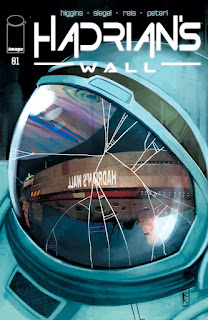 |
| BBQ mackerel and accompaniments |
It’s some
time since, on a trip away from London for work, I’ve treated myself to a lone
fine dining experience.
But in
Brighton in June, the The Other Half and I tried a new(ish) restaurant on the
seafront, The Salt Room, and back in the city for work this weekend, I booked
for myself.
From that,
you’ll be able to surmise that it was a good experience – but perhaps that was
luck?
On
Saturday evening, I was seated at a spacious table, with a view across the
promenade to the Channel as night slipped in.
The Salt
Room has a short menu – always a good thing – but nevertheless, it was no easy
choice. There is little on the list that I would not appreciate.
That, of
course, is where a nice dry sherry comes in as you browse and salivate.
I opted,
in the end, for BBQ mackerel as a starter. Three slices of impeccably cooked
fish – and you can easily taste just how fresh it was in the first place – came
with a sea buckthorn curd, passionfruit, beetroot, slices of almost translucent
raddish and a garnish of dill.
It looked
beautiful and it tasted beautiful.
 |
| Partridge |
The flavour
combination might sound odd, but it was not: the curd in particular was a
gorgeous revelation, the beet supplies earthiness, the raddish a spot of crisp
bite and the fruit a little zing.
For a main,
I opted for partridge with more beetroot, smoked bacon, kale, quince and a
bread sauce.
Some might
have also selected side dishes (a peculiarly British dining thing), but I had
no need. Portion size was perfect for me and when food is like this, why change
what the chef has designed?
Again, the
beet added earthiness, if it was a little undercooked for my usual taste. The
partridge was simply superb – moist and tender and with excellent flavour.
The bread
sauce was a delight and the kale and bacon added textures and tastes to a thoroughly
pleasing dish.
Both these
dishes simply sang of autumn: bold, earthy flavours from excellent seasonal
produce reminds the diner – if this is needed – why seasonality is not simply
sensible, but a joy.
One of the
joys of dining on your own is that nothing need come between you and mulling
the flavours you’re enjoying – and that was certainly the case here.
 |
| Chocolate ganache |
To finish,
I opted for a chocolate ganache, with frozen blackberry meringue, compote and
liquorice ice cream – another hit.
Blackberry
– when not sweetened by processing – has a wonderfully tart taste and also
simply reeks of autumn.
I enjoyed
some Riesling Trimbach to accompany. The wine list is not particularly lengthy,
but there are far more wines available by the glass than is often the
situation.
The service is informal and friendly, but also efficient and knowledgeable.
Back in
June, The Other Half observed that he could not think of anywhere in the UK
where he’d eaten, that was not Michelin starred, that was as good as The Salt
Room.
A second
visit did nothing at all to make me disagree.
To find
out more and to book, visit www.saltroom-restaurant.co.uk.












